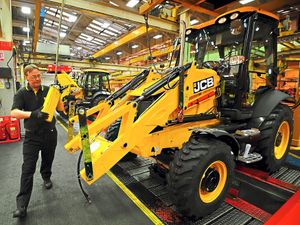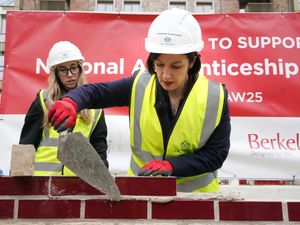Self-driving Jags launch on to hi-tech open road
The first public road trials have been launched for a fleet of self-driving cars that can 'talk' to each other and the highway around them.
The Jaguars and Land Rovers are part of the £7.1 million UK CITIE Project to create the UK's first full connected road infrastructure to prepare for self-driving cars hitting the market.
For the cars to work, they need to be able to communicate between each other but also with the highways they travel on. A 40-mile 'connected corridor' has been kitted out with a world-first combination of wireless technologies as part of the trial.
The research fleet of connected cars, including Discovery Sports, Range Rovers and Jaguar F-Paces, 'talk' to each other and the surroundings to improve safety, avoid accidents and prepare for self-driving
More than 40 miles of the M40, M42, A45 and A46 will benefit from the world-first combination of dedicated short-range communications, 3/4G mobile networks, WiFi and fibre optic networks to ensure vehicles can always be connected to each other and to infrastructure.
It moves the testing on from trials run around Coventry town centre on a restricted set of roads.
Connecting cars to each other and their surroundings (known as V2X) is a vital step for safe, large-scale deployment of self-driving cars in the future. The latest connected technology complements other vehicle sensors and extends a vehicle's ability to ‘see’ further down the road and ‘speak’ to other vehicles, infrastructure, pedestrians and the network. For instance, warning that a car too far ahead to see has applied its brakes allows a following driver to avoid a potential accident. The system will work on both manual and autonomous driving and so will greatly improving road safety across levels of autonomy.
Colin Lee, Jaguar Land Rover connectivity manager, said: “To realise the full benefit of self-driving cars, we need to understand the infrastructure that’s required to support them. Connectivity not only takes us a step closer to making self-driving cars a reality but it also creates the platform to bring more connected safety features to our customers within the next few years. We’re working with some fantastic global experts across industry and academia and we’re eager to take the project into this next phase of testing.”
Jaguar Land Rover will be trialling a range of intelligent connected features such as emergency electronic brake light warning (EEBL), emergency vehicle warning (EVW), and in-vehicle signage (IVS) for roadworks warning (RWW) and traffic condition warning (TCW).
JLR says UK CITE is just one of the connected and autonomous projects which is helping it offer customers an increased choice of features, while maintaining an enjoyable and safe driving experience. This project forms part of the company’s vision to leverage connectivity as a segue to making the self-driving car viable in the widest range of real-life, on- and off-road driving conditions.
The UK Connected Intelligent Transport Environment project is expected to take a total of 30 months, and is made up of a consortium including Visteon Engineering Services, Jaguar Land Rover, Coventry City Council, Coventry University, Highways England, HORIBA MIRA, Huawei Technologies, Siemens, Vodafon, Transport for West Midlands and WMG at University of Warwick.





